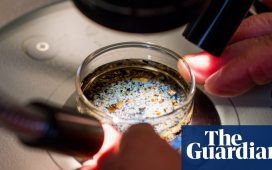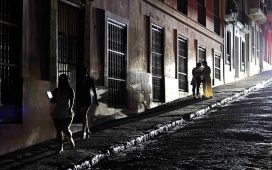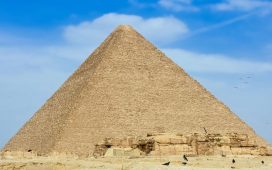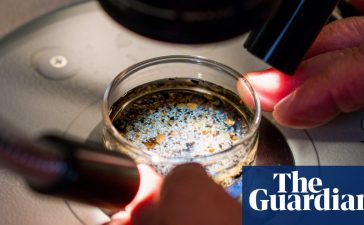The famous Herculaneum scroll, charred papyrus found buried by the Mount Vesuvius eruption in 79AD, has been deciphered by artificial intelligence.
The feat was achieved by students in the Vesuvius challenge, which used algorithms to scan the artifact that would otherwise had been destroyed if unraveled by human hands.
The winning team read more than 2,000 ‘never-before-seen’ texts that discussed sources of pleasure, such as music, the taste of capers and the color purple.
The three students, from Egypt, Switzerland and the US, share a $700,000 grand prize for uncovering hundreds of words across more than 15 columns of text, corresponding to around five percent of an entire scroll.
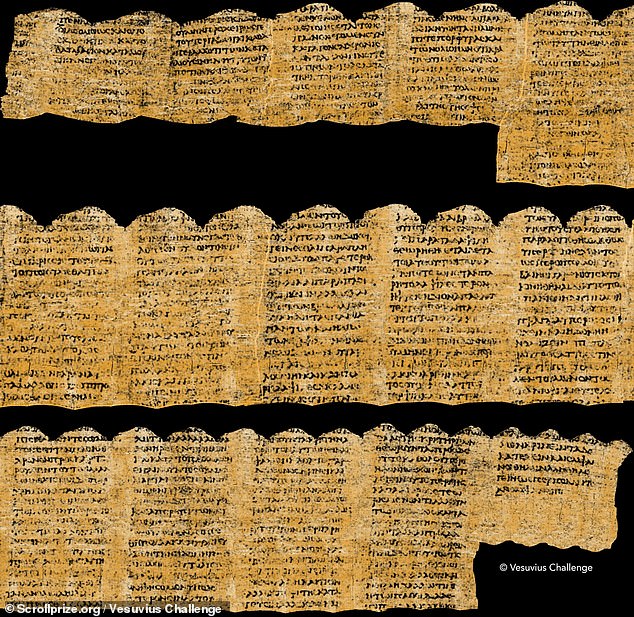
The winning team read more than 2,000 ‘never-before-seen’ texts, which discussed sources of pleasure, such as music, the taste of capers and the color purple
The Vesuvius Challenge was launched in March 2023 by Brent Seales, a computer scientist at the University of Kentucky, and Silicon Valley backers.
At the time, Seales released thousands of 3D images of two rolled-up scrolls, as well as an AI program that had been trained to read letters in the marks left by ink.
Shortly after, Luke Farritor from Nebraska and Youssef Nader from Egypt independently revealed the same word hidden within the heart of the sealed manuscript – ‘πορφύραc’ – meaning purple dye or clothes of purple.
And the pair shared a $40,000 prize.
However, Monday’s announcement revealed the grand prize winners, which also included Nadaer, Farritor, but in addition to Julian Schilliger, a Swiss robotics student at the Swiss Federal Institute of Technology Zurich.
The eruption of Mount Vesuvius in 79 AD destroyed the settlements of Pompeii, Herculaneum, Torre Annunziata and Stabiae, killing thousands in the process.
hundreds of texts from the Herculaneum library were also buried and carbonized by the smoking ash and gases.
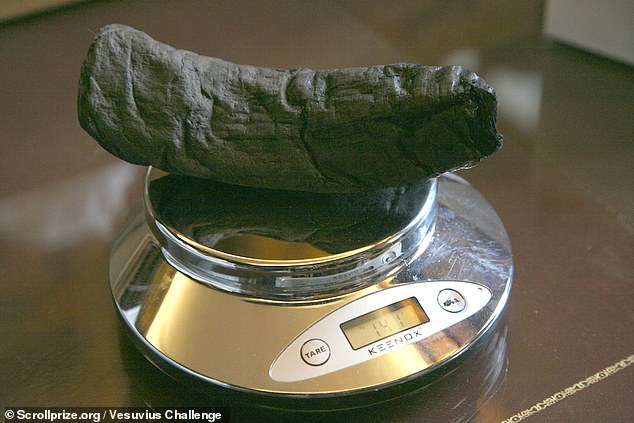
The feat was achieved by students in a contest that trained algorithms on scans of the artifact (pictured)
The charred scrolls resurfaced in 1752 in a villa near the Bay of Naples that was once believed to belong to the father-in-law Julius Caesar, but their contents have remained a mystery as scientists judged them too fragile to unfurl.
The AI program was trained to read the ink on both the surface and hidden layers of the unopened scrolls, according to Nature.
The general subject of the text is pleasure, which, properly understood, is the highest good in Epicurean philosophy.
The author of the ancient Greek text is believed to be Philodemus, a philosopher who lived in the villa where the scroll was found.
In two snippets from two consecutive columns of the scroll, the author shared their concern with whether and how the availability of goods, such as food, can affect the pleasure that they provide.
The ancient Greek text reads: ‘As too in the case of food, we do not right away believe things that are scarce to be absolutely more pleasant than those which are abundant.’
‘However, is it easier for us naturally to do without things that are plentiful? ‘Such questions will be considered frequently.’
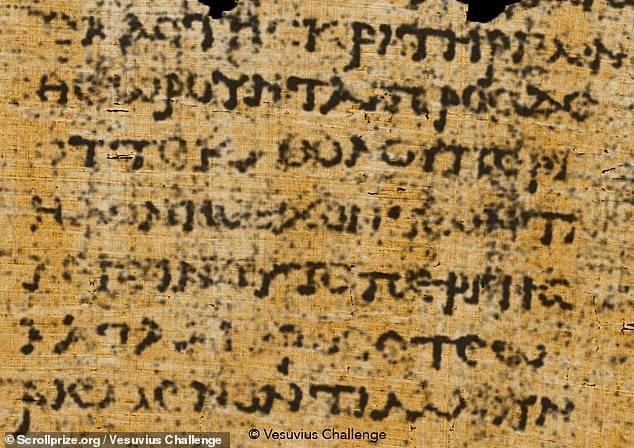
In the closing section of the text our author takes a parting shot at his adversaries, who ‘have nothing to say about pleasure, either in general or in particular, when it is a question of definition’
![The scroll concluded: '… for we do [not] refrain from questioning some things, but understanding/remembering others. And may it be evident to us to say true things, as they might have often appeared evident'](https://www.businessfast.co.uk/wp-content/uploads/2024/02/1707177869_512_First-passages-of-Herculaneum-scroll-are-DECIPHERED-by-AI-Students.jpg)
The scroll concluded: ‘… for we do [not] refrain from questioning some things, but understanding/remembering others. And may it be evident to us to say true things, as they might have often appeared evident’
‘It’s been an incredibly rewarding journey,’ said Youssef. ‘The adrenaline rush is what kept us going. It was insane. It meant working 20-something hours a day. I didn’t know when one day ended and the next day started.’
‘It probably is Philodemus,’ Fowler said of the author.
‘The style is very gnarly, typical of him, and the subject is up his alley.
‘I think he’s asking the question: what is the source of pleasure in a mix of things? Is it the dominant element, is it the scarce element, or is it the mix itself?’
In the closing section of the text the author took a parting shot at his adversaries, who ‘have nothing to say about pleasure, either in general or in particular, when it is a question of definition.’
The scroll concluded with: ‘… for we do [not] refrain from questioning some things, but understanding/remembering others. And may it be evident to us to say true things, as they might have often appeared evident!’
Papyrologist and prize judge Richard Janko at the University of Michigan said: ‘Is the author Epicurus’ follower, the philosopher and poet Philodemus, the teacher of Vergil? It seems very likely.
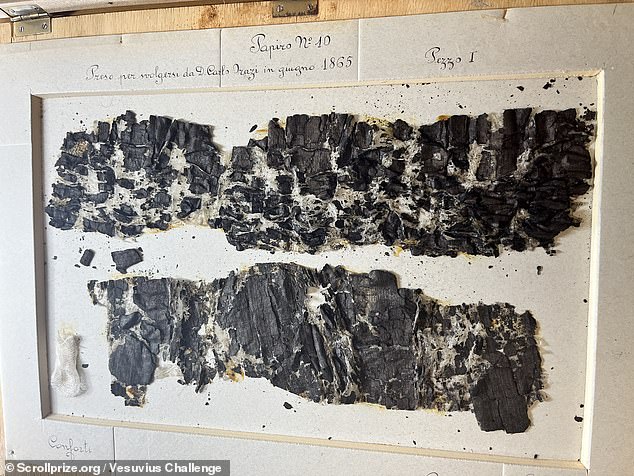
Pictured is the result of an attempt to unroll on of the many scrolls found at the excavation site
‘Is he writing about the effect of music on the hearer, and comparing it to other pleasures like those of food and drink? Quite probably.
‘Does this text come from his four-part treatise on music, of which we know Book 4? Quite possibly: the title should soon become available to read.
‘So many questions! But improvements to the identification of the ink, which can be expected, will soon answer most of them. I can hardly wait.’
The V
The challenge continues this year with the goal to read 85% of the scroll and lay the foundations for reading all of those already excavated

